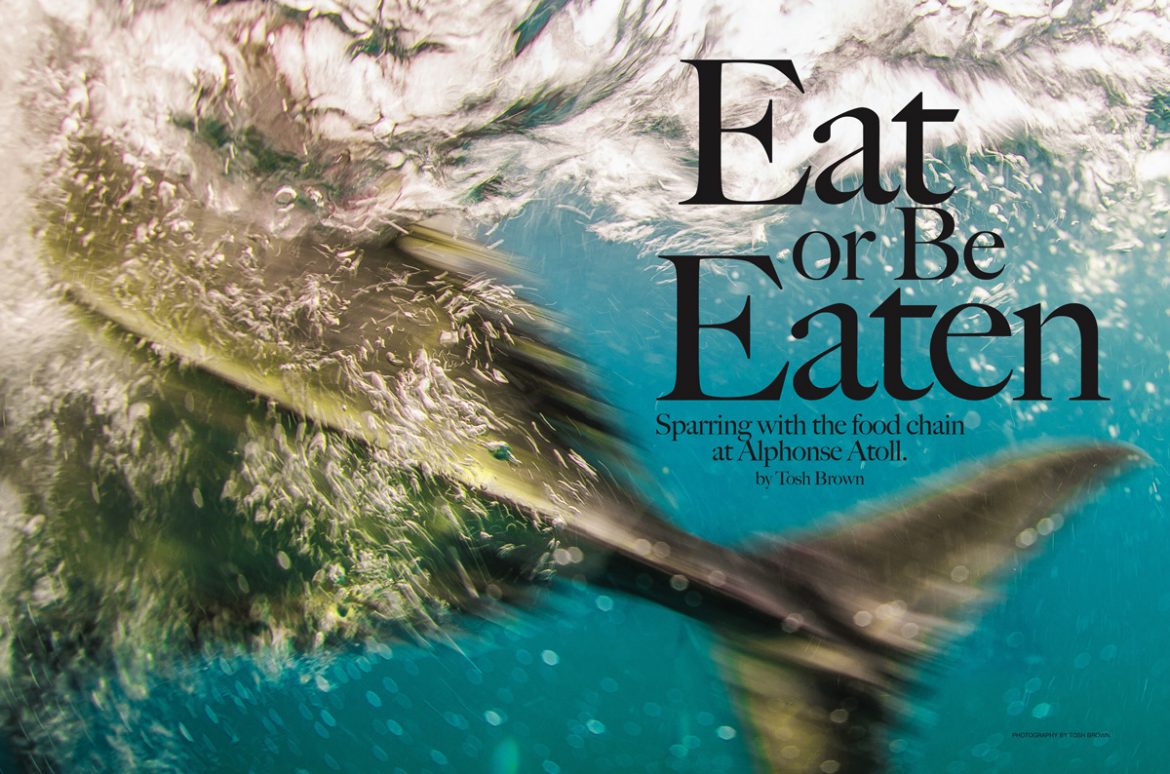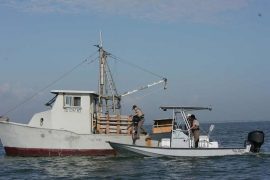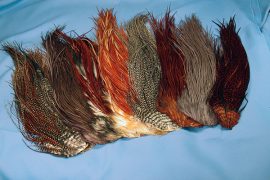
Sparring with the food chain at Alphonse Atoll.
[by Tosh Brown]HAVING VISITED A FAIR NUMBER OF FISHING DESTINATIONS during my 50-odd years on this watery orb, I’ve noticed a consistency in the distribution of predator and prey relative to their proximity with man. In more civilized locales there are often noticeable gaps in the food chain. Netting and long-lining of predator fish, for example, allow their forage to overstock. Conversely, exploitation of baitfish reduces predator numbers or forces them to hunt elsewhere.
In a few cases, though, I’ve been fortunate to experience remote locations where the hunters and the hunted remain in pristine balance. Those fisheries have an unmistakable edge about them. On a remote Bahamian out island, many years ago, I was fighting a small lemon shark that had been harassing bonefish when a three-foot barracuda bit off its tail at boatside. After tossing a tube lure and catching the cuda, it swam over to a nearby creek and was promptly dispatched by a six-foot bull shark. Checks and balances.
I’m guessing that’s how all fisheries looked before we began disturbing the mix with nets and gang hooks. Watch your back. Know your place in the company. Dumb and slow will get you bit.
After a day and a half of travel from Texas to the Indian Ocean, I had high hopes for experiencing the raw natural order when I first viewed the flats of Alphonse and St. François Atolls from our charter flight. Shallow specks in a vast, deep ocean with no population centers within thousands of miles. A week later, I left the Seychelles with taped-up fingers, shredded flies, and verification that Darwinism is indeed alive and well at Alphonse Atoll.

THE SEYCHELLES ARE AN ARCHIPELAGO of 115 named islands located 7 degrees south of the equator in the western Indian Ocean. From the island capital of Mahe, one must travel quite a distance to reach a significant landmass: 994 miles to Kenya, 2,020 miles to India, 1,134 to Madagascar.
Alphonse Island Resort was first established in 2000 by a group of South Africans who converted an abandoned coconut plantation into a beautiful facility for anglers, divers, and beachgoers. Its paved runway ferries guests to and from Mahe via charter flight. Anglers sleep in comfortable chalets on the beach and gather each evening for drinks and dinner at Le Lys, an…





